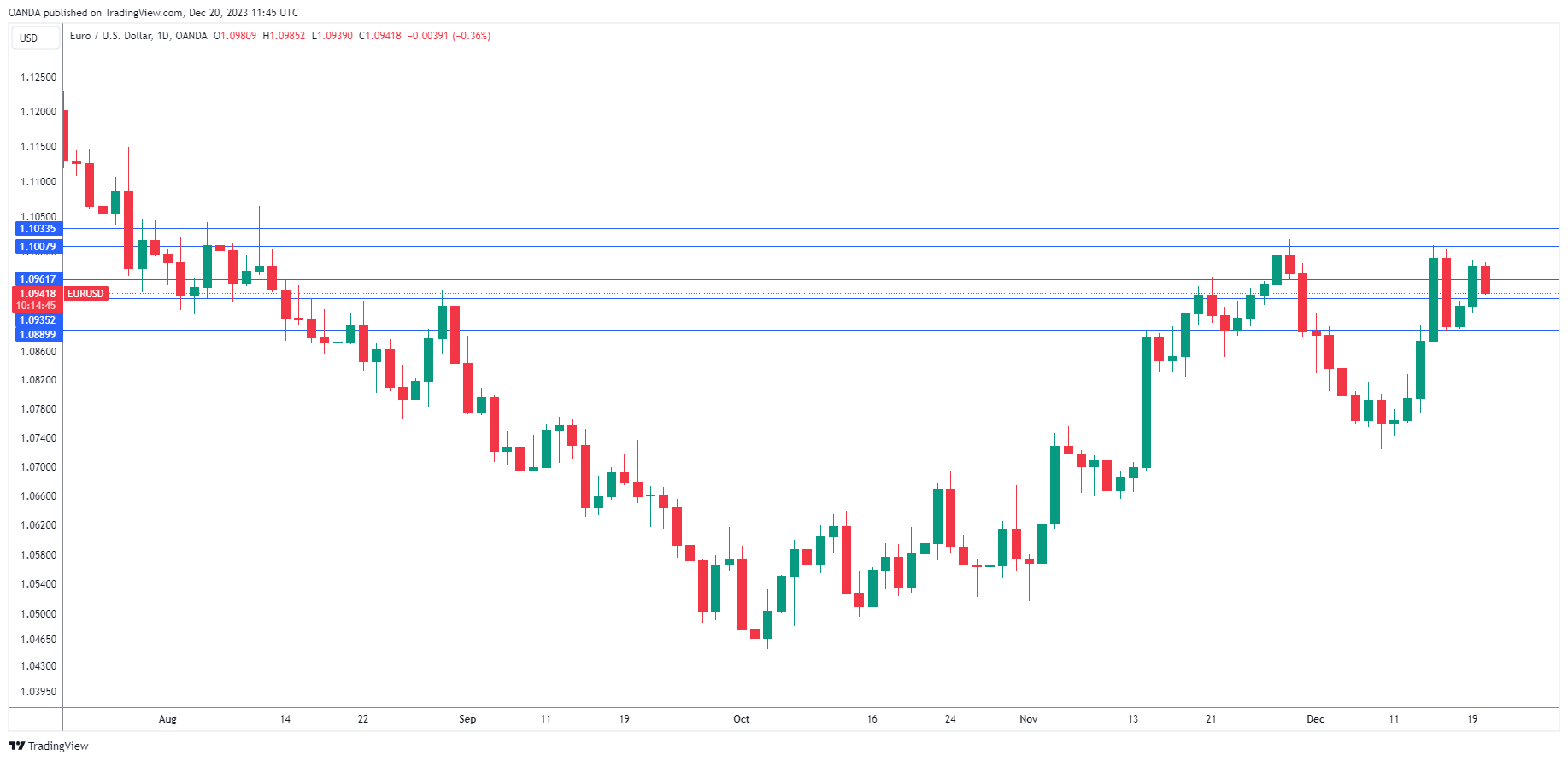- German PPI eases to 7.9%
- German GfK Consumer Confidence index improves slightly
The euro has dropped in Wednesday’s trade. In the European session, EUR/USD is trading at 1.0939, down 0.38%.
German PPI Declines by 7.9%
Germany’s producer price index fell by 7.9% y/y in November, another sharp decline after the October reading of -11%. This was lower than the market consensus of -7.5% and marked a fifth straight month of decline. Monthly, PPI dropped 0.5%, more than the consensus estimate of -0.3% and following a 0.1% decrease in October.
The drop in PPI was largely driven by a sharp drop in energy and electricity prices. Germany’s economy remains weak and the decrease in domestic activity and global demand for German products has cooled the economy and resulted in lower inflation in the eurozone’s largest economy. Consumers are feeling squeezed by the cost of living crisis and high borrowing costs and it’s no surprise that German consumer confidence is mired deep in negative territory.
The GfK Consumer Confidence index, released today, showed a slight improvement heading into January, with a reading of -25.1, compared to a revised -27.6 in December and above the market consensus of -27. Recent data out of Germany has not been encouraging. Business confidence remains weak and declined in December. As well, services and manufacturing PMIs pointed to contraction in December.
There is a deep disconnect over rate expectations between the ECB and financial markets. The markets have priced in six rate cuts in 2024, perhaps as early as March. The ECB has tried to dampen rate cut expectations and ECB President Lagarde said that members did not discuss rate cuts at last week’s meeting, at which the central bank held the cash rate at 4.0% for a second straight time. Lagarde received support earlier from ECB member Yannis Stournara this week when he stated that the ECB would need to see inflation sustainably below 3% before it would cut rates.
EUR/USD Technical
- EUR/USD is testing support at 1.0961. Below, there is support at 1.0935 and 1.0889
- 1.1007 and 1.1033 are the next resistance lines
